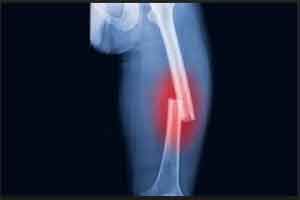- Home
- Editorial
- News
- Practice Guidelines
- Anesthesiology Guidelines
- Cancer Guidelines
- Cardiac Sciences Guidelines
- Critical Care Guidelines
- Dentistry Guidelines
- Dermatology Guidelines
- Diabetes and Endo Guidelines
- Diagnostics Guidelines
- ENT Guidelines
- Featured Practice Guidelines
- Gastroenterology Guidelines
- Geriatrics Guidelines
- Medicine Guidelines
- Nephrology Guidelines
- Neurosciences Guidelines
- Obs and Gynae Guidelines
- Ophthalmology Guidelines
- Orthopaedics Guidelines
- Paediatrics Guidelines
- Psychiatry Guidelines
- Pulmonology Guidelines
- Radiology Guidelines
- Surgery Guidelines
- Urology Guidelines
Gastric bypass associated with higher fracture risk compared to Gastric banding: JAMA

Gastric bypass associated with higher fracture risk compared to Gastric banding, finds a new study.
According to a retrospective study,Roux-en-Y gastric bypass carries a higher fracture risk than adjustable gastric banding, The study has appeared in JAMA Surgery.
The researchers conducted the study to evaluate the fracture risk associated with Roux-en-Y gastric bypass compared with that of adjustable gastric banding among older adults.
This study used Medicare claims data to compare risk of fracture among about 42,000 patients who had weight-loss surgery. Nearly 30,000 patients (average age 51) who had Roux-en-Y gastric bypass (RYGB) were compared with nearly 13,000 patients (average age 55) who had adjustable gastric banding. Over an average follow-up of 3½ years, there were 658 nonvertebral fractures, such as to the wrist, pelvis, upper arm and hip among the patients.
The researchers found that the incidence of any nonvertebral fracture was 6.6 per 1000 person-years with bypass versus 4.6 per 1000 with banding. After multivariable adjustment, bypass was associated with a 73% increased risk.
Gastric bypass conferred significantly increased fracture risks at the hip, wrist, and pelvis, with the greatest risk increase seen for hip fracture (hazard ratio, 2.8).
The study reports patients who had RYGB had increased risk of fracture compared with patients who had adjustable gastric banding.
The researchers note that gastric bypass "is associated with high-turnover bone loss with significant, long-term declines in bone density and deterioration of microarchitecture." Commentators, meanwhile, question the clinical significance of the findings given the low absolute risks — for example, only 0.4% of bypass patients and 0.2% of banding patients had hip fractures.
A limitation of the study is that a large proportion of the study group was eligible for Medicare because of a disability; patients younger than 65 with certain disabilities are eligible for Medicare. Fracture risk may be an unintended consequence of RYGB surgery, which is otherwise associated with many health benefits, and this should be discussed with patients.
For further reference log on to:
JAMA Surgery article
comparedfracturegastric bandingGastric BypasshigherJAMAJAMA SurgeryJournal of American Medical Associationrisksurgery
Next Story
NO DATA FOUND

Disclaimer: This site is primarily intended for healthcare professionals. Any content/information on this website does not replace the advice of medical and/or health professionals and should not be construed as medical/diagnostic advice/endorsement or prescription. Use of this site is subject to our terms of use, privacy policy, advertisement policy. © 2020 Minerva Medical Treatment Pvt Ltd